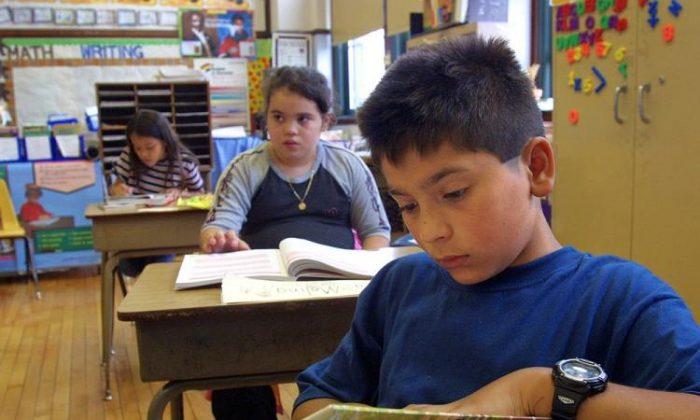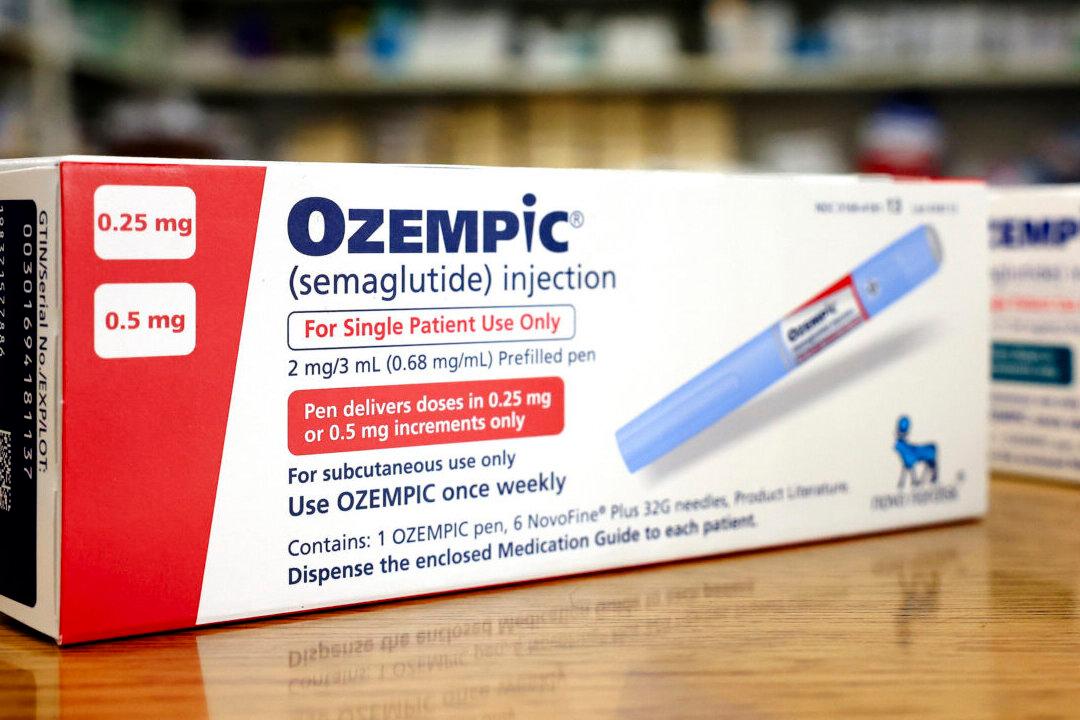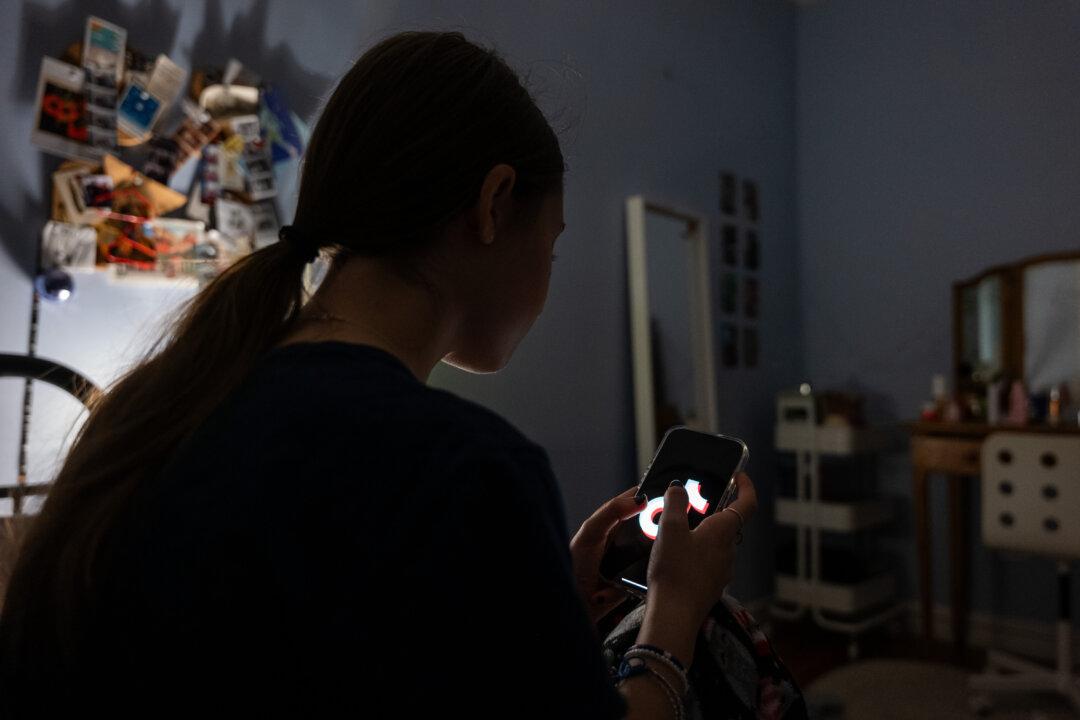According to government statistics, America’s education system is failing. According to one expert, lower expectations and the shift in focus from academic excellence in mathematics, science, reading, and history toward the implementation of social constructs like critical race theory equals fewer literate graduates.
Finne, a former adjunct scholar now serving as Director of the Center for Education at Washington Policy Center, has been analyzing education policy for the past 13 years. Her research suggests the unmistakable decline in the literacy of America’s students from fourth to twelfth grade is a direct result of the shift from academic excellence toward social constructs such as CRT.
“Internationally, we do pretty well at the fourth grade,” Finne told The Epoch Times, “but we decline from there.” Recent statistics support her claim.
America’s students fare worse in science, with fourth-graders having only a 36 percent proficiency rate and eighth-graders dropping to 35 percent. Twelfth-graders have only a 22 rate of proficiency in science. The worst scores come in history, with fourth-graders starting out with only 20 percent proficiency and dropping to 15 percent by the eighth grade. By grade 12, America’s students have a paltry 12 percent proficiency level in history.
The Shortage of Qualified Teachers
“We don’t expect our teachers to be particularly well educated and they are not trained to teach the science of reading,” Finne said. “So basically, we have a public school system that is negligently instructing children how to read, and it’s been going on for decades.”Conversely, teachers blame other factors for the academic decline among America’s students.
“More than one in five teachers (21.8 percent) report that they have been threatened and one in eight (12.4 percent) say they have been physically attacked by a student at their current school,” the 2019 report stated further. “Compounding the stress, teachers report a level of conflict with—and lack of support from—administrators and fellow teachers, and little say in their work. More than two-thirds of teachers report that they have less than a great deal of influence over what they teach in the classroom (71.3 percent) and what instructional materials they use (74.5 percent), which suggests low respect for their knowledge and judgment.”
Lowering the Academic Achievement Bar
Rather than develop curriculum that provides students with the qualifications needed to graduate high school, Finne says the education system has opted to lower the bar of academic standards.As Finne explains, traditional educational standards have been reorganized into systems of oppression and the whole CRT construct—a “false philosophy from radical professors in higher education” is now being “imposed as the truth” in the standards of learning in K-12 schools.
“When you take attention away from the basics, and focus on teaching this ideology, you’re going to get a lowered level of knowledge and skill acquisition of the basics in reading, math, history, and science; not to mention learning falsehoods in history like the 1619 Project,” Finne insisted. “It’s astonishing.”
Finne also cited the movement to get rid of testing.
“I see the state board of education is now working on eliminating the need for tests,” Finne noted, and while she is not a big proponent of testing and believes students are currently being “over-tested,” she believes the elimination of all testing would be a disaster because we would not know which kids are falling behind and we would lose the proof that the current standards are failing.
Finne explained that one of the things the top-down reforms did was to require state tests to measure student knowledge in math, reading, and science. Those tests revealed a huge academic achievement gap of 20 to 30 points between white and Asian students and those of black, Hispanic, and Native American children.
“So, the CRT concepts come along by virtue of the radicals,” Finne said. “Educators no longer learn how to teach reading writing and science. They learn how to teach social justice to the children. So, their priorities have been turned completely upside down. We’re not focused on teaching children who aren’t doing well in schools to a higher level. We’re lowering the bar.”
The Status Quo System
According to Finne, the new push by the school system to abandon efforts of academic achievement and shift toward social constructs like CRT is an effort to hide the fact that they have failed in their jobs to educate our children. “The whole idea is that if the community knew that their schools are not educating their children to basic levels they would rise up,” Finne said. “Just look what’s happening now with the uprising of parents against CRT in places like Loudoun County [Virginia] and they’re still going forward with it. It’s a huge uphill battle for parents.”“The whole system has promoted children whether they learn the content or not,” Finne said. “So why should they care if a whole generation of children lost the content of a year? It’s consistent with their practice. They do not individualize education. They don’t make sure each, individual child is ready to go on to the next grade. They move them along, especially minority children. The only people blocking real reform are the defenders of the status quo, the ones who like it just the way it is.”
‘Remove all Indicators’ of Failure
Through the years, schools have sought to eliminate the concept of winning to protect the feelings of those who lost. It started when teachers stopped using red pens in grading because it was suggested by experts that “the use of a red pen may convey unintentional negative emotions.” It was later suggested that teacher’s stop using behavior charts because “rewards are for training pets, not people” and “treating behavior as ‘good’ or ‘bad’ is part of an antiquated paradigm that doesn’t take into consideration a child’s temperament, developmental stage or emotional needs.” Schools went on to do away with keeping score in sports, eliminating valedictorians and trophies. Now schools are trying to eliminate standardized testing because it’s supposedly racist.“With test scores going down, now they want to take tests out altogether,” Finne lamented. “That’s not the way forward. If you study CRT ideology, it’s consistent with their thinking, that ’the system is racist, whites are oppressors, the only reason why minority children aren’t getting ahead is because they’re unfairly treated compared to whites. So how do we fix that? We remove all indicators that show we aren’t doing well as educators.”
The Silver COVID-19 Lining
Ironically, Finne believes the greatest hope for the education of America’s children will rise from the ashes of the COVID-19 school lockdowns.“Maybe out of the ashes of this, school choice will arise,” Finne opined of the educational chaos that ensued during the lockdowns. “This is still a democracy. The exchange of ideas is still happening in education because we do care about our children. That’s what I’m hoping; that people will see the wisdom of giving parents real control, not just window dressing like involving parents and having parent involvement coordinators, but real control.”





